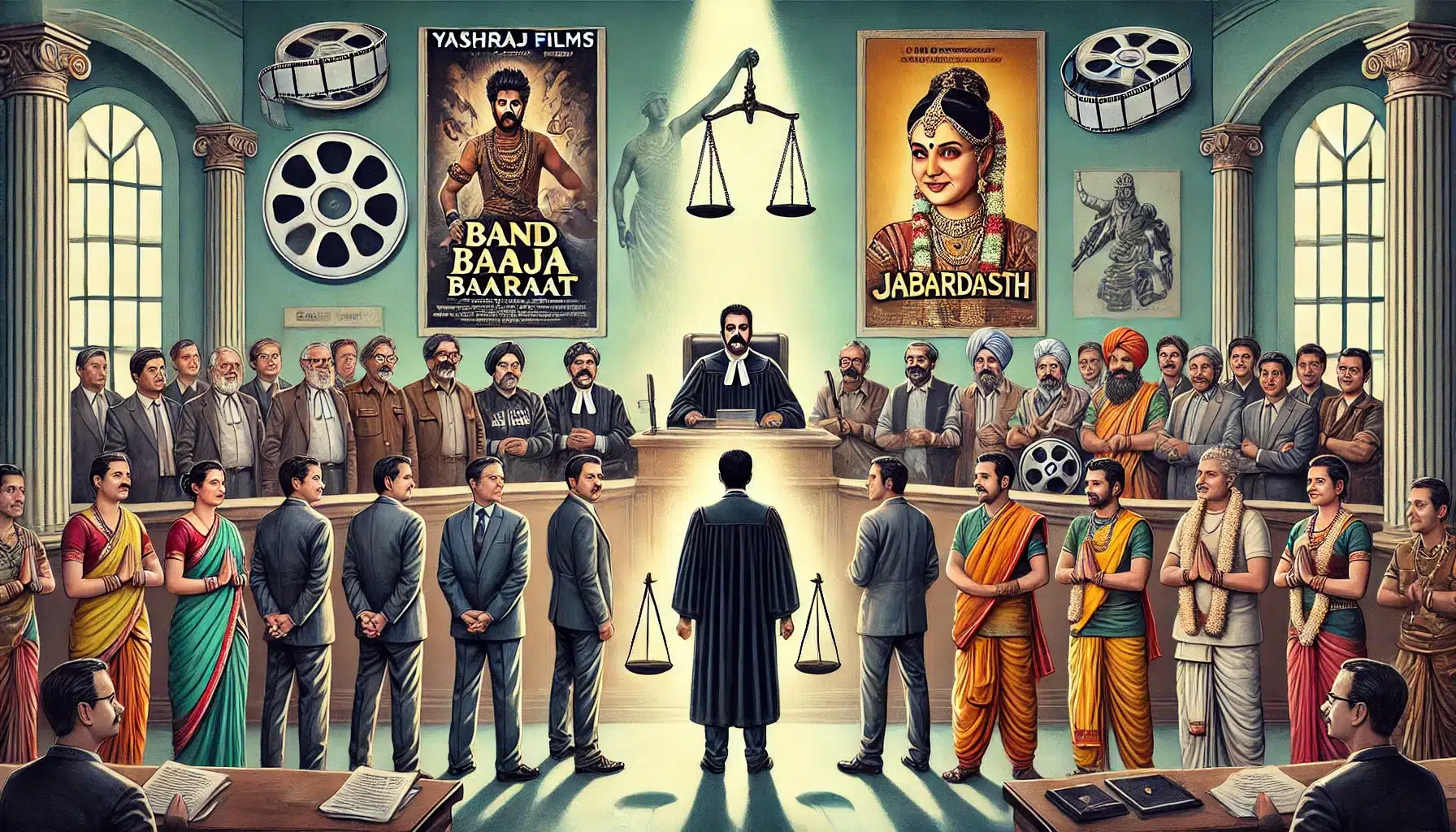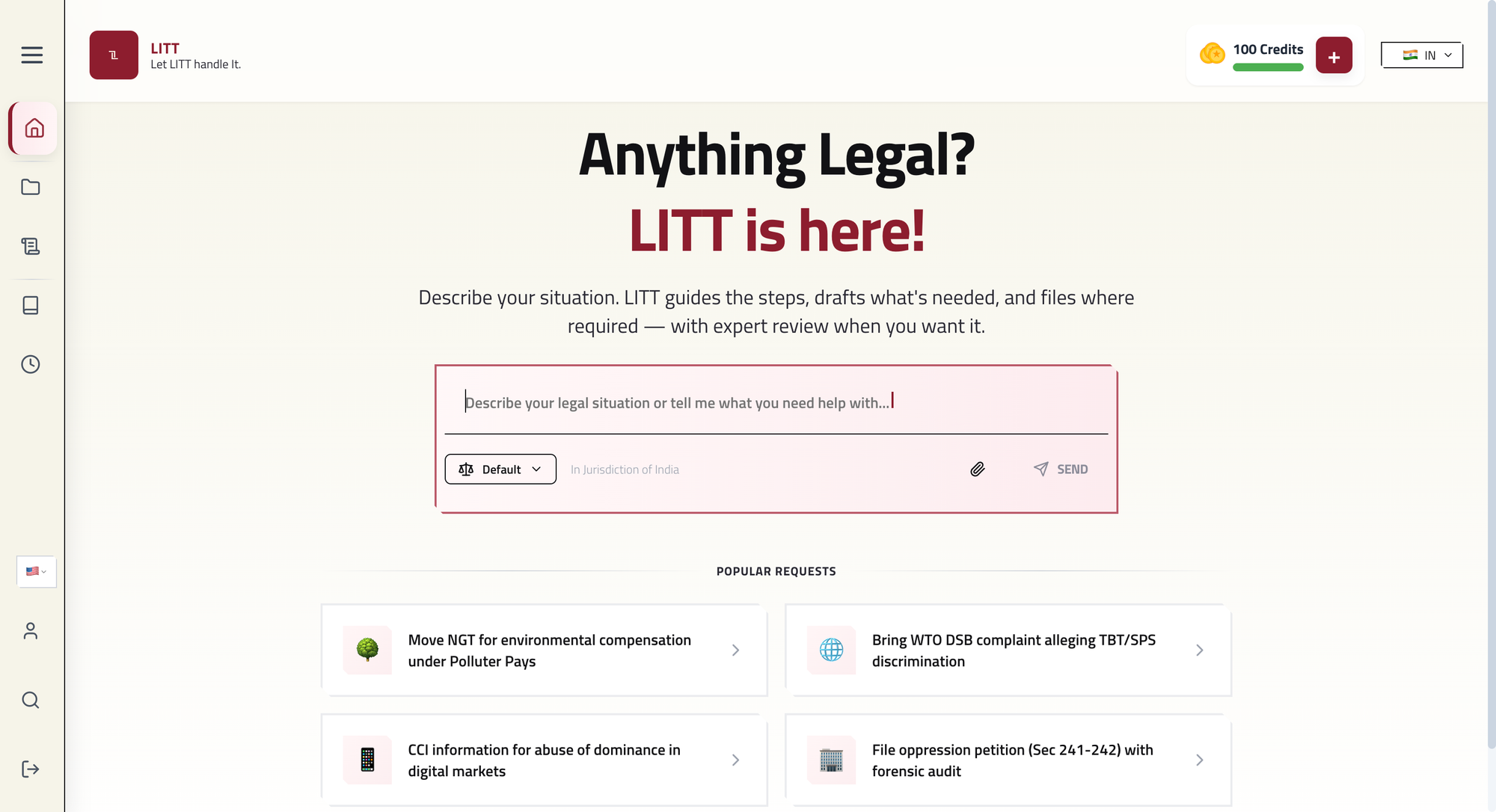In Yash Raj Films Pvt Ltd v. Sri Sai Ganesh Productions (2019), the Delhi High Court ruled in favor of Yash Raj Films, finding that the Telugu remake “Jabardasth” was a substantial copy of the Bollywood movie “Band Baaja Baaraat.” The court emphasized that copyright protection extends beyond physica

Legal AI associate for drafting & compliance
“This case highlights the legal protections afforded to copyright holders and the judicial mechanisms available to enforce these rights against unauthorized reproductions and adaptations.”
Citation: AIR 2019: DEL 1017
Date of judgment: 8th July, 2019
Court: Delhi High Court
Bench: Hon’ble Justice Manmohan
Facts
- In this case, Yashraj Films Pvt. Ltd, the plaintiff, holds exclusive copyrights for various elements of the Bollywood movie “Band Baaja Baaraat”, including its dialogue, theme, concept, plot, script, and music. Despite announcing publicly that these copyrights had not been sold to any third party, the Telugu production house “Sri Sai Ganesh Production” attempted to remake the film without authorization.
- The plaintiff first learned of the unauthorized remake in December 2011 and subsequently sent multiple legal notices to the defendants—Defendant No. 1 (Producer), Defendant No. 2 (Distributor), and Defendant No. 3 (Director) of “Sri Sai Ganesh Production”—requesting them to cease and desist from their actions. Despite these notices, the defendants did not respond. The Telugu remake, titled “Jabardasth,” was released on February 22, 2013, and was a direct copy of the plaintiff’s film. Additionally, the rights for a Tamil remake, “Dum Dum Pee Pee” were sold to another Tamil production house, further infringing on the plaintiff’s copyrights.
- The plaintiff filed a copyright infringement suit, asserting that “Jabardasth” copied the plot, theme, and character sketches of “Band Baaja Baaraat.” The defendants acknowledged the plaintiff’s copyright ownership over the script, screenplay, and dialogues.
Decision of the Delhi High Court
Justice Manmohan’s ruling underscores the importance of originality in the realm of copyright law, particularly within the film industry. The court’s competence to adjudicate the matter was established by the fact that the movie in question was released in Delhi. After examining the evidence, the court determined that the impugned film was essentially a replica of the original, lacking the necessary originality that the Copyright Act, 1957, requires.
Citing Sections 13(3)(a) and 2(d) of the Act, the judgment highlighted that originality is a core requirement for a work to be eligible for copyright protection. In this case, the absence of originality in the impugned film was crucial to the court’s decision to grant relief to the Plaintiff.
Moreover, the court interpreted Section 14(d)(i) of the Act broadly, in line with the Supreme Court’s decision in R.G. Anand v. M/s Deluxe Films and Ors.[1] The Supreme Court had previously held that copyright infringement is not limited to exact physical duplication but extends to works that are substantially similar in their core essence—the “substance, the foundation, the kernel”. This broader interpretation reinforces the idea that copyright protection encompasses the underlying creative expression, not just the physical form of a work.
Key legal issues discussed
1. Can copyright subsist in a cinematograph film independent of the underlying works that it is composed of?
Yes
Court held that in Indian Copyright law, a cinematograph film is treated as a comprehensive work that encompasses various underlying creative elements, each of which can receive individual copyright protection. These underlying works include components such as scripts, dialogues, sound recordings, and musical compositions—each classified under different categories like literary works, musical works, and sound recordings.
The court has upheld that a cinematograph film, as a whole, is also entitled to copyright protection under the Indian Copyright Act, 1957. Specifically, Sections 2(d) and 13(2)(i) of the Act provide this protection. Section 2(d) defines the “author” of a cinematograph film as the person who takes the initiative and responsibility for making the film, while Section 13(2)(i) clarifies that copyright subsists in cinematograph films.
This approach ensures that both the overall film and its individual creative components are protected, preventing unauthorized reproduction or imitation. The law recognizes the film as a single entity while also acknowledging the distinct contributions of the underlying works, each deserving of its own copyright protection.
2. Does the Delhi High Court have the jurisdiction to hear the present matter?
Yes
The Delhi High Court’s decision to assert territorial jurisdiction in the case concerning the movie “Jabardasth” was based on the fact that the film was released in Delhi, as well as in other parts of the country. This ruling aligns with the principles of territorial jurisdiction, which allow a court to hear a case if the cause of action, or a part of it, arises within its territorial limits. In this instance, the release of the impugned movie in Delhi provided sufficient grounds for the Delhi High Court to adjudicate the matter. This decision underscores the importance of the place of distribution or release when determining jurisdiction in cases involving intellectual property, such as copyright infringement.
3. Can the expression ‘to make a copy of the film’ under Section 14 of the Indian Copyright Act, 1957 refer only to making a physical copy of the film?
No
This ruling by the Delhi High Court underscores the broad interpretation of the term “to make a copy of the film” under Section 14(d)(i) of the Indian Copyright Act, 1957. The court expanded the traditional understanding of “copy” beyond just physical reproductions of a movie to include intangible elements, such as the idea-expression dichotomy, which is crucial in copyright law.
By ruling that the defendant’s dubbed version incorporated the “fundamental, essential, and distinctive features” of the original work “Band Baaja Baaraat,” the court emphasized that copyright infringement can occur even when the copying is not verbatim but involves the unauthorized use of the core creative aspects of a work. This decision reinforces the protection of creative works in India and could have significant implications for how courts address cases of alleged infringement in the future, particularly in relation to adaptations, remakes, or dubbed versions of original works.
Conclusion
The case highlights how the Delhi High Court carefully examined the similarities between the two movies, focusing on aspects like plot, theme, and character development. By determining that the impugned movie contained a substantial part of the original work “Band Baaja Baaraat,” the court found sufficient grounds for copyright infringement. The ruling not only restrained the defendant production house from further infringement but also imposed significant damages with an interest rate of 18% per annum, emphasizing the court’s strong stance on protecting the rights of original content creators.
[1] 1978 AIR 1613.


